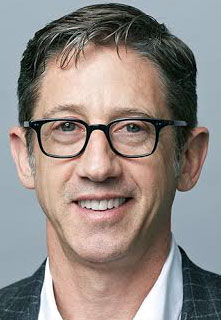/ Recently Commented
Starlink’s zoomready Rating Is Going Down
 zoomready is open-source shareware I wrote to measure the suitability of an internet connection for teleconferencing. As you can see above, Starlink had an average zoomready rating of 2.66 out of a possible 3.0 over the four measured days. The problem is NOT bandwidth, which has fluctuated but stayed above the minimums needed for good teleconferencing. The problems are failures (most of them short), latency, and jitter. more
zoomready is open-source shareware I wrote to measure the suitability of an internet connection for teleconferencing. As you can see above, Starlink had an average zoomready rating of 2.66 out of a possible 3.0 over the four measured days. The problem is NOT bandwidth, which has fluctuated but stayed above the minimums needed for good teleconferencing. The problems are failures (most of them short), latency, and jitter. more
- Tom Evslin
- Comments: 5
- Views: 8,314
Another Year of the Transition to IPv6
 I bet that nobody believed in 1992 that thirty years later, we'd still be discussing the state of the transition to IPv6! In 1992 we were discussing what to do about the forthcoming address crunch in IPv4, and having come to terms with the inevitable prospect that the silicon industry was going to outpace the capacity of the IPv4 address pool in a couple of years, we needed to do something quickly more
I bet that nobody believed in 1992 that thirty years later, we'd still be discussing the state of the transition to IPv6! In 1992 we were discussing what to do about the forthcoming address crunch in IPv4, and having come to terms with the inevitable prospect that the silicon industry was going to outpace the capacity of the IPv4 address pool in a couple of years, we needed to do something quickly more
- Geoff Huston
- Comments: 2
- Views: 14,825
How the Verified Mark Certificate (VMC) Makes the Mailbox Safer
 Nowadays, with increasing digitalization and internet usage, email is a central communication tool. This holds true even despite the high popularity of instant messaging apps and social media. Email remains the favorite means of business communication worldwide, both in B2B and B2C. In 2019, 293.6 billion emails were sent and received. By 2025, this number will grow even more. It is predicted that we will send and receive 376.4 billion emails per day. In this scenario, implementing security features for email communications has become absolutely essential. more
Nowadays, with increasing digitalization and internet usage, email is a central communication tool. This holds true even despite the high popularity of instant messaging apps and social media. Email remains the favorite means of business communication worldwide, both in B2B and B2C. In 2019, 293.6 billion emails were sent and received. By 2025, this number will grow even more. It is predicted that we will send and receive 376.4 billion emails per day. In this scenario, implementing security features for email communications has become absolutely essential. more
- Simone Catania
- Comments: 3
- Views: 18,521
The EARN IT Act: The Wrong Solution to a Complex Problem
 The EARN IT Act was reintroduced into Congress last Monday, with the promise that it would end Internet platforms' "blanket immunity" for "tens of millions of photos and videos" of child sexual abuse that they allow to circulate online. With the bill already scheduled for hearing in committee, it's on track to be passed quickly. And why shouldn't it be, if its sponsors' claims about it are true? Perhaps because they're not true. more
The EARN IT Act was reintroduced into Congress last Monday, with the promise that it would end Internet platforms' "blanket immunity" for "tens of millions of photos and videos" of child sexual abuse that they allow to circulate online. With the bill already scheduled for hearing in committee, it's on track to be passed quickly. And why shouldn't it be, if its sponsors' claims about it are true? Perhaps because they're not true. more
- Jeremy Malcolm
- Comments: 1
- Views: 14,305
Why ‘Open’ May Become the Keyword of the Digital World in 2022?
 From open standards and software to data, 'open' has been a defining word of the internet since its early days. However, most of the digital growth around major platforms has been driven by proprietary software and 'closed' systems. Recently, companies such as Microsoft and Google have been shifting towards open-source software more and more. Over the last few years, additional momentum was created with the USA adopting the open-source approach to cope with lagging behind, mainly, Huawei in the development of 5G networks. more
From open standards and software to data, 'open' has been a defining word of the internet since its early days. However, most of the digital growth around major platforms has been driven by proprietary software and 'closed' systems. Recently, companies such as Microsoft and Google have been shifting towards open-source software more and more. Over the last few years, additional momentum was created with the USA adopting the open-source approach to cope with lagging behind, mainly, Huawei in the development of 5G networks. more
- Jovan Kurbalija
- Comments: 2
- Views: 9,037
Initiative for the Future of the Global Internet
 When reading some of the nonsense constituting this initiative occurring in Washington, one wonders what planet the proponents live on. It is like peering through some perverse wormhole back to a 1990s Washington view of the world that saw “the internet” as some salvation for all the problems of humankind. For a world now focused on rolling out 5G virtualization infrastructure and content-based services and meshed devices, the challenges of cybersecurity and network-based harm to society, the initiative makes the U.S. Administration seem utterly out of touch with reality. Simply goofy. more
When reading some of the nonsense constituting this initiative occurring in Washington, one wonders what planet the proponents live on. It is like peering through some perverse wormhole back to a 1990s Washington view of the world that saw “the internet” as some salvation for all the problems of humankind. For a world now focused on rolling out 5G virtualization infrastructure and content-based services and meshed devices, the challenges of cybersecurity and network-based harm to society, the initiative makes the U.S. Administration seem utterly out of touch with reality. Simply goofy. more
- Anthony Rutkowski
- Comments: 3
- Views: 9,775
ICANN’s Accountability Mechanisms – in Name Only?
 On December 14, 2021, Dot Hip Hop, LLC (DHH) filed an Urgent Reconsideration Request following ICANN staff inaction (for its over four-month delay) of its Assignment Request for the .hiphop Registry Agreement. Not only did the ICANN Board Accountability Mechanisms Committee (BAMC) decide against considering the Reconsideration Request on an urgent basis, but on its last day of business for 2021, ICANN Org decided to retaliate against DHH for filing the Reconsideration Request in the first place ... more
On December 14, 2021, Dot Hip Hop, LLC (DHH) filed an Urgent Reconsideration Request following ICANN staff inaction (for its over four-month delay) of its Assignment Request for the .hiphop Registry Agreement. Not only did the ICANN Board Accountability Mechanisms Committee (BAMC) decide against considering the Reconsideration Request on an urgent basis, but on its last day of business for 2021, ICANN Org decided to retaliate against DHH for filing the Reconsideration Request in the first place ... more
- Jeff Neuman
- Comments: 5
- Views: 16,271
Internet Governance Outlook 2022: A Global Digital Compact or a Bifurcated Cyberspace?
 This is the 10th edition of my annual Internet Governance Outlook. The first one was published on CircleID on January 3, 2013, just a couple of weeks after ITU's World Conference on International Telecommunications (WCIT). I wrote: "Anyone who expected that with the end of the Dubai Conference, the heated debate on the future regulation of the Internet will slow down should remember the fairytale of the knight's battle with the seven-headed dragon. Hardly a head is cut off, another one is growing." more
This is the 10th edition of my annual Internet Governance Outlook. The first one was published on CircleID on January 3, 2013, just a couple of weeks after ITU's World Conference on International Telecommunications (WCIT). I wrote: "Anyone who expected that with the end of the Dubai Conference, the heated debate on the future regulation of the Internet will slow down should remember the fairytale of the knight's battle with the seven-headed dragon. Hardly a head is cut off, another one is growing." more
- Wolfgang Kleinwächter
- Comments: 1
- Views: 24,502
Web3 - What Brand Protection Pros Need to Know
 Avivah Litan, the storied Gartner analyst, laid it down succinctly for insiders in her blog two and one-half years ago. She said, "Web 3.0 will transform us from Web 2.0's monetization via surveillance capitalism and advertising to monetization built directly into the protocol that is equally available to any connected user." Translated, that means we'll control our destiny by owning and managing our credentials for logging into systems, content, financial resources, and, importantly, our data. And, we are told, blockchain technology will enable all that. more
Avivah Litan, the storied Gartner analyst, laid it down succinctly for insiders in her blog two and one-half years ago. She said, "Web 3.0 will transform us from Web 2.0's monetization via surveillance capitalism and advertising to monetization built directly into the protocol that is equally available to any connected user." Translated, that means we'll control our destiny by owning and managing our credentials for logging into systems, content, financial resources, and, importantly, our data. And, we are told, blockchain technology will enable all that. more
- Frederick Felman
- Comments: 2
- Views: 16,667
IRP Panel Sanctions Afilias, Clears the Way for ICANN to Decide .web Disputes
 The .web Independent Review Process (IRP) Panel issued a Final Decision six months ago, in May 2021. Immediately thereafter, the claimant, Afilias Domains No. 3 Limited (now a shell entity known as AltaNovo Domains Limited), filed an application seeking reconsideration of the Final Decision under Rule 33 of the arbitration rules. Rule 33 allows for the clarification of an ambiguous ruling and allows the Panel the opportunity to supplement its decision if it inadvertently failed to consider a claim or defense, but specifically does not permit wholesale reconsideration of a final decision. more
The .web Independent Review Process (IRP) Panel issued a Final Decision six months ago, in May 2021. Immediately thereafter, the claimant, Afilias Domains No. 3 Limited (now a shell entity known as AltaNovo Domains Limited), filed an application seeking reconsideration of the Final Decision under Rule 33 of the arbitration rules. Rule 33 allows for the clarification of an ambiguous ruling and allows the Panel the opportunity to supplement its decision if it inadvertently failed to consider a claim or defense, but specifically does not permit wholesale reconsideration of a final decision. more
- Kirk Salzmann
- Comments: 1
- Views: 11,404
The Formation of IPv4 Address Markets
 Something odd happened through 2021 in the market for IPv4 addresses. Across 2021 the reported market price for the transfer of IPv4 addresses has doubled, from approximately USD $27 per IPv4 individual address at the end of 2020 to around USD $55 per address in December 2021. It has taken seven years for the market price to rise from just under USD $10 to get to USD $20 per address. The next year, 2020, saw the price rise a further USD $7 per address, and then in the next 12 months, the market price doubled. more
Something odd happened through 2021 in the market for IPv4 addresses. Across 2021 the reported market price for the transfer of IPv4 addresses has doubled, from approximately USD $27 per IPv4 individual address at the end of 2020 to around USD $55 per address in December 2021. It has taken seven years for the market price to rise from just under USD $10 to get to USD $20 per address. The next year, 2020, saw the price rise a further USD $7 per address, and then in the next 12 months, the market price doubled. more
- Geoff Huston
- Comments: 2
- Views: 38,798
Protecting Your Brand in the New World of NFTs
 Months ago, while watching a Saturday Night Live skit about non-fungible tokens (NFT) featuring a parody of Janet Yellen speaking to a high school economics class, I realized what an NFT is and how they work. What they represent, how they are minted, and how their value is exchanged became clear while watching Pete Davidson in a boy wonder unitard rap about the latest crypto-phenomena. It was only later that I realized that NFTs have plenty of practical applications. more
Months ago, while watching a Saturday Night Live skit about non-fungible tokens (NFT) featuring a parody of Janet Yellen speaking to a high school economics class, I realized what an NFT is and how they work. What they represent, how they are minted, and how their value is exchanged became clear while watching Pete Davidson in a boy wonder unitard rap about the latest crypto-phenomena. It was only later that I realized that NFTs have plenty of practical applications. more
- Frederick Felman
- Comments: 1
- Views: 14,730
Five Reasons to Avoid Using Maps on Websites
 Robert Frost wrote that good fences make good neighbors. Yet when it comes to virtual fences, visualized as maps, I'm not sure there is any way to create "good fences." So many regions around the world are under dispute. And even regions that may appear settled may be anything but. I've long written about the problems of using flags on your website, particularly for navigation. But maps often present a much larger geopolitical challenge. If you can avoid using them, do so. more
Robert Frost wrote that good fences make good neighbors. Yet when it comes to virtual fences, visualized as maps, I'm not sure there is any way to create "good fences." So many regions around the world are under dispute. And even regions that may appear settled may be anything but. I've long written about the problems of using flags on your website, particularly for navigation. But maps often present a much larger geopolitical challenge. If you can avoid using them, do so. more
- John Yunker
- Comments: 1
- Views: 10,971
Why Did Russia Test an Anti-Satellite Missile and Why Doesn’t China Condemn the Test?
 On November 15th, Russia used an anti-satellite missile to destroy COSMOS 1408, a defunct spy satellite. The explosion quickly created over 1,500 pieces of trackable debris and will likely generate hundreds of thousands of smaller pieces. As a precautionary measure, the astronauts on the International Space Station, two of whom are Russians, took shelter in escape shuttles during two orbits. The anti-satellite test was widely criticized, but the Russian defense ministry released a statement saying... more
On November 15th, Russia used an anti-satellite missile to destroy COSMOS 1408, a defunct spy satellite. The explosion quickly created over 1,500 pieces of trackable debris and will likely generate hundreds of thousands of smaller pieces. As a precautionary measure, the astronauts on the International Space Station, two of whom are Russians, took shelter in escape shuttles during two orbits. The anti-satellite test was widely criticized, but the Russian defense ministry released a statement saying... more
- Larry Press
- Comments: 2
- Views: 13,064
Potential Impacts of Large-Scale Metaverses on Internet Governance: Bandwidth
 Neal Stephenson’s foundational cyberpunk novel Snow Crash brought to the public the concept of a metaverse, a virtual reality in which people interact using avatars in a manufactured ecosystem, eschewing the limitations of human existence. More recently, Ready Player One capitalized on that idea and brought it back to prominence with a bestselling novel and subsequent film adaptation. Amid rebranding efforts and seeking a new way forward, Mark Zuckerberg has made it Facebook’s (now Meta Platforms) priority to build a platform that could enable the metaverse to become a mainstream technology with the sort of reach that their social networks and WhatsApp have. more
Neal Stephenson’s foundational cyberpunk novel Snow Crash brought to the public the concept of a metaverse, a virtual reality in which people interact using avatars in a manufactured ecosystem, eschewing the limitations of human existence. More recently, Ready Player One capitalized on that idea and brought it back to prominence with a bestselling novel and subsequent film adaptation. Amid rebranding efforts and seeking a new way forward, Mark Zuckerberg has made it Facebook’s (now Meta Platforms) priority to build a platform that could enable the metaverse to become a mainstream technology with the sort of reach that their social networks and WhatsApp have. more
- Mark Datysgeld
- Comments: 4
- Views: 17,094